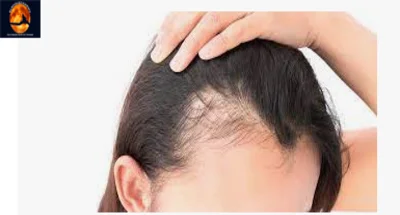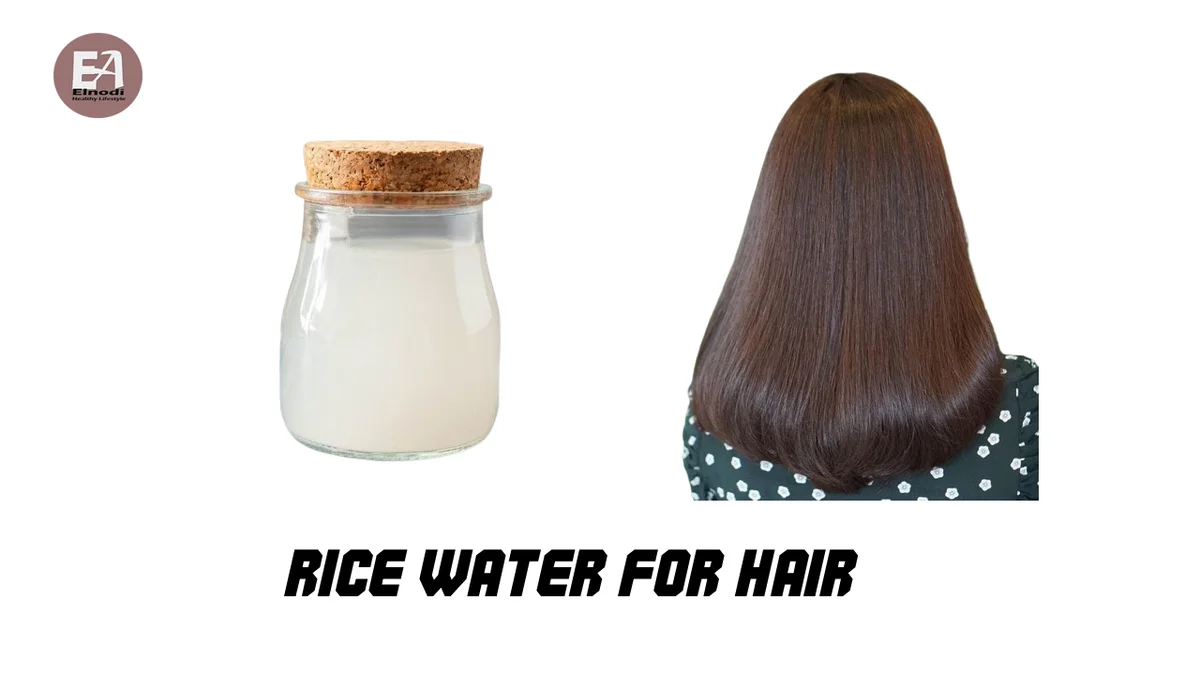Baldness is a term that describes significant hair loss from the scalp. The most common cause of baldness is hereditary hair loss as people become older.
Some people may instead leave their hair loss untreated and unnoticed. Hairstyles, cosmetics, caps, and scarves may conceal it. Others choose the treatment to prevent additional hair loss or restore hair growth.
Consult your doctor about the reason for your hair loss before beginning treatment.
mayoclinic.org
One of the best benefits of getting hair treatments is that it prevents damage to your hair. The treatment penetrates into your hair and scalp, providing moisture, which promotes the health of your hair. Hair treatments also decrease hair fall and reduce split ends.
Symptoms
It can manifest itself in a variety of ways, depending on the cause. It might strike abruptly or gradually, affecting either your scalp or your entire body.
The followings are some signs and symptoms :
The top of the head is gradually thinning.
This is the most prevalent form of hair loss, which occurs as people become older. Hair recedes near the hairline on the forehead in men. Women’s hair often has a broadening of the part. A receding hairline is an increasingly common hair loss trend in older women (frontal fibrosing alopecia).
Bald areas that are round or spotty.
On the scalp, beard, and brows, some people lose hair in circular or spotty bald areas. Before the hair falls out, your skin may become uncomfortable or unpleasant.
Hair loss occurs suddenly.
Hair might loosen because of physical or mental trauma. When combing or washing your hair, or even after light tugging, a few strands of hair may fall out. Hair thinning is common with this form of hair loss, although it is only temporary.
Hair loss all over the body.
Hair loss can occur because of some medical diseases and treatments, such as chemotherapy for cancer. Hair grows back in most cases.
Scaling patches that extend throughout the scalp
This is a ringworm symptom. Broken hair, redness, swelling, and leaking are all symptoms.
When should you see a doctor?
If you or your child are experiencing persistent hair loss and would like to seek treatment, see your doctor. Discuss early treatment options with your doctor if you have a receding hairline (frontal fibrosing alopecia) to avoid major irreversible baldness.
When combing or washing your or your child’s hair, talk to your doctor if you detect abrupt or uneven hair loss or more than typical hair loss. Sudden hair loss can show an underlying medical problem that needs to be addressed.
what causes hair loss?
On average, people lose 50 to 100 hairs per day. Because new hair grows, this is usually undetectable.
the cause of hair loss :
1. Family background (heredity).
An inherited disease that occurs with aging is the most common cause of hair loss. We sometimes know androgenic alopecia as male-pattern baldness or female-pattern baldness. In men, it manifests as a receding hairline and bald spots, whereas in women, it manifests as thinning hair around the crown of the head.
2. Medical disorders and hormonal shifts
Hormonal changes caused by pregnancy, childbirth, menopause, and thyroid disorders can all result in permanent or temporary hair loss.
3. Supplements and medications.
Certain medicines, such as those used to treat cancer, arthritis, depression, heart problems, gout, and high blood pressure, can cause hair loss as a side effect.
4. Head-on radiation therapy.
Hair may not regrow as before.
5. A very stressful event.
Very stress after physical or mental stress, many people notice a general thinning of their hair several months later. This hair loss is only temporary.
6. Treatments and hairstyles
Excessive hairstyling or hairstyles that pull your hair tight, like pigtails or cornrows, can lead to traction alopecia, a kind of hair loss. Hot-oil hair treatments and permanents can also cause hair loss. Hair loss could be permanent if scarring develops.
Risk factors
A variety of circumstances can cause risk, including:
- Significant weight reduction with age
- Balding family history on your mother’s or father’s side
- Diabetes and lupus are two medical disorders that cause stress.
- Nutritional deficiencies
cause of hair loss in women
1. Androgenetic alopecia

We know male or female pattern baldness as androgenetic alopecia. It’s a prevalent reason.
Male and female pattern baldness are both inherited. Hair loss from the temples and crown of the head is more common in men. Hair usually thins down all over the head in females.
2. Pregnancy
Shortly after having birth, some women may have substantial hair. This is because estrogen levels are dropping. This form of hair loss is usually only transitory and goes away within a year or less.
Try these tips to get your hair back to normal:
- shampoo and conditioner with volumizing properties.
- Using fine hair care products
- Intensive conditioners and conditioning shampoo should avoid because they can be excessively heavy for fine hair.
- To avoid weighing down the hair, apply conditioner to the ends rather than the scalp.
3. Telogen effluvium
Telogen effluvium is typically a transient ailment that goes away with time. We recommend that you see a doctor to determine the cause.
The following are some causes:
- severe anxiety
- surgery
- childbirth
- quick weight reduction
- thyroid issues
- a few medications
4. Anagen effluvium
During the anagen (growth) phase of the hair cycle, anagen effluvium causes a substantial amount of hair to fall out quickly.
Hair loss from the head, as well as other regions of the body, such as the eyebrows and eyelashes, may be a symptom of the illness.
It caused Anagen effluvium by:
- chemotherapy
- radiation
- Infections with fungi
- autoimmune illness
5. Alopecia areata
Alopecia areata is an autoimmune disease that causes abrupt hair loss. The immune system attacks hair follicles, like other healthy body parts.
Small clumps of hair from the scalp, eyebrows, and eyelashes may fall off.
If you have this problem, see a doctor. A doctor may recommend medicine to enhance hair growth.
6. Traction alopecia
Hair loss pushes hair into tight hairstyles, which causes it to break and come free, known as traction alopecia. We connect this condition with the following hairstyles:
- ponytails or tight buns
- braids
- cornrows
- extensions
7. Medications
Certain drugs have negative effects
These are some examples of such medications:
- Warfarin and other blood thinners
- Accutane is an acne medication.
- Prozac and Zoloft are two antidepressants.
- beta-blockers
- Lopid and other cholesterol-lowering medicines
8. Nutritional deficiencies
Nutritional inadequacies can cause hair loss. Extreme diets that are excessively low in protein and certain micronutrients, such as iron, can cause excessive hair shedding.
If a person’s hair is falling out, they should consult a doctor for a blood test to see if they have a nutritional deficiency.
9. Contraceptive pills
When taking birth control medications, some people experience hair loss. Others may have hair loss weeks or months after stopping the medication.
For birth control tablets, folks can choose one with a low androgen index. This may reduce the likelihood of hair loss.
The following are some examples of birth control pills having a lower androgen index:
- Desogen
- Ortho-Cept
- Ortho-Cyclen
10. Ringworm
Ringworm is a fungus that can lead to hair loss. Tinea capitis, or ringworm on the scalp, can cause bald patches on the head.
The signs and symptoms are:
- a small area that grows larger, resulting in scaly, hairless skin patches
- fragile, easily broken hair
- In the affected areas, there are itchy, red patches of skin.
- blisters on the scalp oozing
- ring-shaped patches with a crimson exterior and a skin-toned interior
How can I prevent hair loss?
- I should fly hairstyles.
If you wear your hair in braids, buns, or ponytails regularly, keep them loose to avoid putting too much pressure on your hair.
2. Do not touch your hair.
Try not to pull, twist, or rub your hair as much as possible.
3. Dry your hair.
After bathing, gently pat your hair dry with a towel. Avoid touching or twisting your hair with the towel.
4. Aim for a well-balanced, nutrient-dense diet.

Snacks and lunches should include lots of iron and protein.
Styling products and appliances can also cause hair loss. The following are some examples of goods or tools that can help with hair loss:
- hair dryers
- combs with heat
- straightening irons
- products for coloring
- bleaching substances
- perms
- relaxers
treatments for hair loss for men
Medications
Hair loss can sometimes treat with over-the-counter drugs. Foams and ointments are examples of them.
Minoxidil (Rogaine) and finasteride are the two most commonly prescribed drugs (Propecia).
Minoxidil
Scientists created minoxidil a Trusted Source to treat high blood pressure. Its creators discovered it caused undesirable hair growth as a negative effect. This impact prompted drug companies to consider using it to treat male baldness.
Minoxidil’s specific mechanism of action is unknown. The medicine appears to enlarge the hair follicle, resulting in the growth of a thicker strand of hair.
Minoxidil can have various negative side effects, including:
- losing of hair
- Irritation and redness of the skin
- Scales on the scalp that are irritating, yellow, or white
- contact dermatitis caused by allergies
- Some girls have excessive hair growth all over their bodies, especially on their faces.
We do not recommend minoxidil for women who are pregnant or breastfeeding, as well as those who are hypersensitive to the medication’s components.
Finasteride
Finasteride is a medication that is used to treat male pattern baldness, which affects the crown and middle of the scalp.
There are various cautions regarding using this medication. It is only appropriate for adults; it is not appropriate for pregnant or lactating women or children.
Scientists to combat prostate cancer developed Finasteride. It works by lowering levels of the hormone dihydrotestosterone (DHT) in the scalp. Reduced DHT levels may encourage hair regrowth and decrease hair loss by causing hair follicles on the scalp to become thinner.
Finasteride, unlike minoxidil, has no effect on hair growth in other regions of the body.
Finasteride has the following adverse effects:
- erection problems
- reduced libido
- ejaculate volume reduction
- depression
Finasteride users who are treating male pattern hair loss may have to wait three months for significant benefits.
Therapies
A dermatologist may prescribe a mix of medicines, ointments, lotions, and shampoos to treat hair loss.
Meetings with specialists are required for some therapy. Several companies offer hair treatments for males. They usually provide services to help determine the best course of action and tailor therapies to the needs of the client.
Surgery
The only surgery available for hair loss is hair transplant surgery.
Hair transplantation works for men with male pattern baldness. A hair transplant involves removing hair follicles from the back of the head, where they are resistant to DHT, and placing them on the scalp.
Combs with lasers
Laser combs are a more recent hair loss therapy option. Advocates believe these gadgets increase hair growth by stimulating hair follicles with focused light.
This treatment has mixed effectiveness and may be most effective when used with other treatments.
Trusted Source studied the effects of low-level laser therapy on 32 men and women with androgenetic alopecia. Laser combs combined with minoxidil and finasteride may help speed up hair growth, according to the study.
Wigs and hairpieces
Hair loss can be permanent or long-term in some circumstances. Others may prefer a non-medical method of hair loss treatment. Wigs and hairpieces can conceal hair loss.
Wigs and hairpieces have come a long way in the last few years. A person’s insurance company may reimburse the expense of a wig if a medical condition caused baldness. Before purchasing a wig, double-check your insurance coverage.
treatment for hair loss naturally for women
1. Massage
Massaging the scalp stimulates the scalp and may promote hair thickness when used in conjunction with hair oils and treatments. a reliable source
Stretching during the massage is supposed to increase hair development and thickness in the dermal papilla cells at the bottom of the hair follicle. These cells are important in the development of hair, hair growth, and the shedding and regeneration cycle.
Massage has also been shown to promote blood flow and scalp health. Hair growth increased blood flow and scalp health, according to a 2019 study.
Taking the time to massage your scalp on a daily basis can also help you relieve stress and tension, which is an extra benefit if these feelings are present.
For centuries, aloe vera has been used for hair loss. It also moisturizes and calms the scalp. It can help to get rid of dandruff and unclog hair follicles that have been clogged with oil.
Several times per week, apply pure aloe vera gel to your scalp and hair. You can also use aloe vera-based shampoo and conditioner.
3. Coconut oil
Coconut oil is a type of vegetable oil. Trusted Source contains lauric acid, a fatty acid that penetrates the hair shaft and helps to prevent protein loss.
Depending on your hair type, coconut oil can be applied before or after shampooing. If your hair is oily, apply a leave-in conditioner overnight or for a few hours before washing it.
Massage coconut oil throughout your hair and scalp. You may also use it as a leave-in treatment if your hair is dry. More research on coconut oil as a hair growth stimulant is needed, however, it has been found to lubricate the hair shaft and reduce breaking.
4. Viviscal
Viviscal is a natural hair growth product that helps people with thinning hair grow more hair.
It contains the AminoMar C marine complex, which is a mineral-rich combination.
Shark and mollusk powder, organic silica, and vitamin C from a reputable source (derived from acerola cherry). These chemicals can aid in the regeneration of new cells and the strengthening of existing ones.
To observe the effects, you must take the capsules twice daily for at least 6 months. Shampoo and conditioner are also available from Viviscal.
5. Fish oil
Omega fatty acids, which are high in nutrients and proteins, can help boost your hair from the inside out. Taking an omega supplement with antioxidants, such as True Source, can help enhance hair density and diameter. It also helps to prevent hair loss.
Omega fatty acids aid cell function and can promote immunity, resulting in improved general health.
Before adding any new supplements to your diet, make sure to follow the manufacturer’s instructions and check with your doctor.
6. Ginseng
Ginseng supplementation Supplements from Trusted sources can encourage hair development by activating hair follicles. Ginsenosides are the active ingredients in ginseng that are thought to be responsible for its hair-boosting properties.
Always follow the directions on supplements and check for any potential adverse effects.
7. Onion juice
If you can tolerate the odor of onion juice, you could discover that the benefits outweigh the drawbacks. Onion juice has been demonstrated to encourage hair development and effectively treat patchy alopecia areata, an autoimmune illness in which the body assaults hair follicles, resulting in hair loss in various places of the body.
Onion juice is also said to help circulate blood. Improved keratinocyte growth factor, an essential modulator of hair follicle formation and growth, has been seen in animal studies.
Blend a few onions and squeeze off the liquid to drink onion juice. Leave the juice in your hair and scalp for at least 15 minutes. After that, apply shampoo.
8. Rosemary oil
Rosemary is a popular essential oil for promoting hair development and reducing hair loss. Rosemary oil has been shown to promote hair development and can even be used to treat androgenetic alopecia.
Before rinsing, combine a few drops of rosemary oil with a carrier oil, such as argan or jojoba oil, and massage it into your hair and scalp. This can be done several times per week.
You may also use rosemary oil to add a few drops to your shampoo and conditioner on a daily basis. Essential oils should never be applied straight to the skin; instead, they should be mixed with carrier oil or shampoo.
9. Geranium oil
Pelargonium graveolens, or geranium, is a fragrant shrub native to South Africa. Geranium oil is a pure essential oil derived from the leaves of the plant. GeraniumTrusted Source oil can be used to stimulate hair growth and circulation.
Apply three drops of geranium essential oil to your hair along with eight drops of carrier oil. A few drops can also be added to your shampoo and conditioner.
Geranium oil can assist to repair, strengthen, and moisturize your hair.
10. Lemon
You can use either fresh lemon juice or lemon oil to improve the quality and development of your hair. Lemon oilTrusted Source may aid in the maintenance of a healthy scalp and hair development.
15 minutes before shampooing, apply fresh lemon juice to your scalp and hair. Lemon essential oil, diluted in a carrier oil, can also be used in a hair mask.
summary
Create a plan and stick to it if you want to improve your hair. Keep in mind that the treatments may take a few months to show benefits.
You can be as creative as you want with the treatments and mix them up as much as you want.
It is critical that you devote time each day to strengthening your hair. If your hair loss is caused by emotional or stress-related difficulties, taking this step and practicing self-care is important. Maintain a healthy lifestyle to go along with your hair care regimen.
If these natural remedies don’t work, talk to your doctor about drugs or procedures.
Frequently Asked Questions ( FAQ)
What is the main cause of hair loss?
The most common cause of hair loss is a hereditary condition that happens with aging. This condition is called androgenic alopecia, male-pattern baldness, and female-pattern baldness
Why am I suddenly losing so much hair?
Possible causes of hair loss include stress, poor diet, and underlying medical conditions. Everyone experiences hair shedding, and it happens to each of us every day. Most people lose 50 to 100 hairs per day as part of this natural cycle, more on days you wash your hair.
How can I stop my hair loss?
Ways to stop hair loss
1. Eat extra protein. You may not be getting enough protein each day and 2. that can affect your hair growth.
2. Take vitamins.
3. Follow the Mediterranean diet.
4. Use over-the-counter hair loss medication.
5. Try low-level laser light therapy.
6. Maintain good hair and scalp care.
7. Can hair loss be reversed?
Can you regrow hair loss?
Although hair re-growth may be possible, you should also know when to seek professional help. If the reason for thinning hair is genetics, it will not grow back on its own. To grow back a healthy, full head of hair, you’ll need to take action, and that involves reviewing different hair loss options





